From the December 2016 issue of DRUM! | By Mike Snyder
Welcome to what is perhaps the most subjective topic ever: the best drum sounds on record. Okay, here’s the thing — every drum sound, drummer, and recording referenced in this article spoke to me at some point in my life. They’re part of my musical DNA, helped make me what I am as a drummer and musician, and continue to inspire me to this day.
But do they represent a definitive list of the best recorded sounds of all time? Hardly. They’re only my choices, which is one of the reasons the wise editors at DRUM! Magazine publish the Feedback column in every single issue, where readers get to join in the conversation (you can see this month’s on page 9). We invite you to write to us with your personal list, and we’ll publish as many responses as we can.
Now back to this list. I didn’t use any strict criteria to choose the following recordings. In one case it was a snare drum sound that was consistent and recognizable over a period of almost a decade. Another was not only the drummer’s playing, but the unique way the entire drum set was recorded. Still another was not just the recorded drum sound, but also the iconic groove of the drummer’s performance. Some of the choices you will know, some you may not recognize. Keep in mind, obscurity doesn’t diminish importance.
Everybody bucked up? Okay, let’s go!
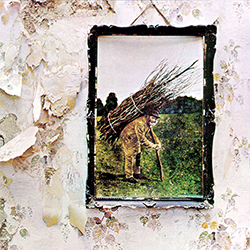 1. John Bonham “When The Levee Breaks” | Led Zeppelin IV by Led Zeppelin (1971) | Engineer: Andy John
1. John Bonham “When The Levee Breaks” | Led Zeppelin IV by Led Zeppelin (1971) | Engineer: Andy John
Sure, Bonham’s performance is wonderful, but the overall drum sound put this track on the list. The drums were set up in the cavernous sounding foyer of Headley Grange in Hampshire, England and captured with just two Beyerdynamic M160 ribbon microphones, placed up a set of stairs away from and above the drums. Unlike most ribbon microphones, which have figure-eight patterns, the M160 has a hypercardioid pattern. In this instance, the tight pattern helped reject some of the room’s massive ambience, capturing more of the direct drum sound. The mikes were put through limiters as well as an Italian made Binson echo device. One of the reasons that particular echo was favored at the time was that it recorded to a magnetic metal drum instead of the more fragile media of magnetic tape. The limiters and Binson echo worked in tandem to create the sixteenth-note slap-back delay prominent in the kick and snare — that’s right, Bonham didn’t play that. This track is pure magic, and taught me to think outside the box, because sometimes the results can be priceless.
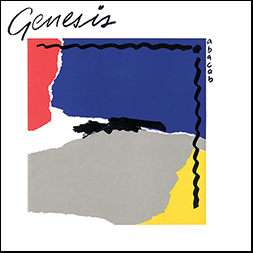 2. Phil Collins “No Reply At All” | Abacab by Genesis (1981) | Engineer Hugh Padgham
2. Phil Collins “No Reply At All” | Abacab by Genesis (1981) | Engineer Hugh Padgham
This is among the first recordings done at Fisher Lane Farm in Chiddingfold, Surrey, England, which opened in 1980. “The Farm” served as both a rehearsal space and recording studio for Genesis and Phil Collins for more than three decades. This track makes the list because it is arguably the most recognizable example of drums with gated reverb. While Peter Gabriel’s song “Intruder,” from his 1980 self-titled record, is an earlier example (perhaps even the first), the gated reverb effect isn’t quite as refined. Collins played drums on “Intruder,” and the same recording engineer, Hugh Padgham, engineered both recordings.
Today we have presets for gated reverb. Back when this track was recorded you had to create the effect from scratch by effecting a drum with a dense reverb with a long decay time, then passing it through a noise gate that would quickly shut down the natural decay of the reverb. This effect became one of Collins’ signature sounds. So you can thank Padgham, Collins, and Gabriel for gated reverb effected drums.
By the way, Fisher Lane Farm is no longer a recording studio. It has been remodeled and converted into a stunning residence that was recently offered for sale at £2,750,000. Does anyone want to go in with me on a real estate investment?
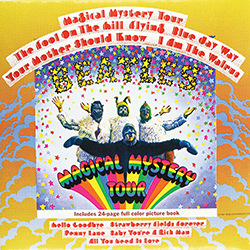 3. Ringo Starr “Strawberry Fields Forever” | Magical Mystery Tour by The Beatles (1967) | Producer George Martin | Engineer Geoff Emerick
3. Ringo Starr “Strawberry Fields Forever” | Magical Mystery Tour by The Beatles (1967) | Producer George Martin | Engineer Geoff Emerick
In my opinion, this is the best Beatles track ever. It features sound effects, backward tape loops, a Mellotron, horns, and glorious strings. Take a critical listen to the drums — most are in mono on the left side of the stereo field due to the limited number of available recording tracks. At that time, all throughout the recording process, tracks had to be submixed to a mono track to open up a track for an additional overdubbed part.
Ringo’s drum track relies heavily on toms. In addition to tambourine and maracas, the track was overdubbed with low pitched concert bass drum and snare drum backbeat. Take a listen from about 0:50 to 1:10. At one point you’ll notice a switch in both pitch and tempo, which is because the mix splices together two different takes in which the pitches were a half-step apart. To make them sound in the same key, the tape speed on the first clip (beginning to 0:60) was increased to raise the pitch. Conversely, the speed of the second take (0:60 to the end) had to be slowed down to lower the pitch. Because of this, the drums at 0:60 onward — the splice point — are lower in pitch than they are at the beginning, making the drums in the second half of the tune wonderfully warm and fat. This track highlights the inventiveness of the recording process, even given the limitations of the technology of the era.
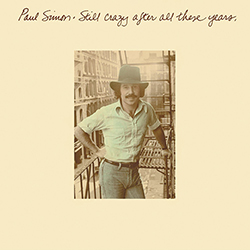 4. Steve Gadd “50 Ways to Leave Your Lover” | Still Crazy After All These Years by Paul Simon (1975) Producer Phil Ramone
4. Steve Gadd “50 Ways to Leave Your Lover” | Still Crazy After All These Years by Paul Simon (1975) Producer Phil Ramone
Honestly, I could have just as easily picked “Nite Sprite” from Chick Corea’s The Leprechaun, “Chuck E’s In Love” from Rickie Lee Jones’ eponymous debut, “Aja” from Steely Dan’s album of the same name, or dozens of other classic recordings featuring Steve Gadd. Cue them up, play them back to back, and you’ll hear a consistently identifiable snare sound occupying the core of Gadd’s sonic identity.
Keep in mind that these examples were all recorded at different times, in different studios, with different producers and engineers at the helm. Even the musical genres are quite different, yet, through all that, Gadd’s personality is ever-present in his snare drum sound.
In my opinion, there are a couple of reasons for this. Foremost is the way he hits the drums. Throughout his long session career, artists and producers hired him for his recognizable feel and that “Steve Gadd sound.”
Also, many of the photos of this period show him playing a 14″ x 5.5″ Ludwig Supraphonic snare, which has a highly identifiable sound. Lastly, attention to detail in the recording process regarding things like EQ and compression helped Gadd’s sound become repeatable.
Listen to “Nite Sprite” at around 1:24, and you’ll hear the snare drum on the verge of distorting, revealing that even tape saturation played a role in realizing Gadd’s sound. Whatever combination of magic it was that consistently created that snare sound, it was pure beauty.
 5. Jeff Porcaro “Rosanna” | Toto IV by Toto (1982) Engineer Al Schmitt
5. Jeff Porcaro “Rosanna” | Toto IV by Toto (1982) Engineer Al Schmitt
Porcaro’s drums sit perfectly in the mix of this timeless track, recorded at Sunset Sound in Hollywood, which is why it earned a spot on the list. In a 1983 interview in Recording Engineer/Producer magazine, Al Schmitt recalls recording the song, “We recorded drums, percussion, acoustic piano, bass, and guitar all at one time. ‘Rosanna’ was a second take. We did it in about an hour and 20 minutes.”
Various accounts of the microphone setup show a mixture of AKG C451/452s for overheads, hi-hat, and snare top, a Shure SM57 on the snare bottom, AKG 414s on the toms, an AKG D12e on the kick, and either a pair of AKG C12s or a single C24 to capture room sound. Remember this combination if you ever plan to record in a high-end studio. It remains the standard for miking drums.
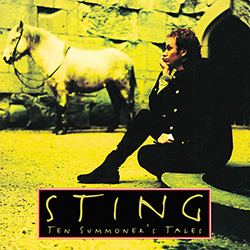 6. Vinnie Colaiuta “Seven Days” | Ten Summoner’s Tales by Sting (1993) | Producer/Engineer Hugh Padgham
6. Vinnie Colaiuta “Seven Days” | Ten Summoner’s Tales by Sting (1993) | Producer/Engineer Hugh Padgham
I haven’t heard many recordings where the drums sit as well in the mix as they do on this Sting track. The snare sound, in particular, is enough to merit a mention, but there’s so much more going on here. Vinnie’s interesting and tasteful drum part leaves room for everything, both sonically and musically, and his perfectly recorded and mixed drums help bring the entire track to life. Notice that the excellent engineer, Hugh Padgham, also captured Genesis’ Abacab record (number two on our top ten).
Interestingly, Ten Summoner’s wasn’t recorded at a traditional recording studio. Tracks were laid at a private residence, in this case Sting’s 16th-century home outside Salisbury, England, and later mixed on an SSL console at The Town House (commonly known as Townhouse studios) in West London, a studio owned by Virgin records.
 7. Jim Keltner “Thing Called Love” | Bring The Family by John Hiatt (1987) | Engineer Larry Hirsch
7. Jim Keltner “Thing Called Love” | Bring The Family by John Hiatt (1987) | Engineer Larry Hirsch
Not even a wall of guitars can bury Keltner’s masterful drum sound on this track. The trick here is all about making good choices, so rather than muddy up the mix with a big fat kick drum, the kick is thinner and less heavy sounding than you’d expect, leaving lots of space for guitars. Even Keltner’s part minimizes the bass drum in the introduction, verses, and interludes. This song is brilliant in both sound and execution.
Digging in deeper, listen to how the straight eighth-notes of the drums rhythmically rub against slightly swung guitar parts in the verses, only to switch roles to where the guitar is mostly straight, but the drums slightly swing in the choruses. After years of listening to this, I am still mesmerized by the effect.
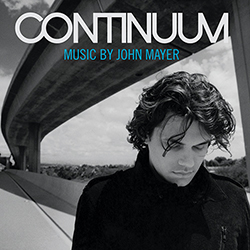 8. Steve Jordan “I Don’t Trust Myself” | Continuum by John Mayer (2006) | Producer Steve Jordan
8. Steve Jordan “I Don’t Trust Myself” | Continuum by John Mayer (2006) | Producer Steve Jordan
This is a great example of the good results that can happen when a drummer is a central part of the production team: You get drum tracks that fit the song perfectly. But if you were expecting Jordan’s signature sky-high snare drum crack, prepare to be surprised. Matching the underwater sound of this slow burner, Jordan’s snare occupies a middle range between thick and punchy, with wires loosened enough to buy extra real estate in the sonic spectrum. His bass drum follows suit in this murky world with a fat, controlled midrange tuning that reveals only the slightest suggestion of ambience. And it’s all done without sacrificing an iota of attack, helping push the arrangement along. He takes advantage of his space in the mix by playing the simplest backbeat, right in the pocket. It almost sounds as if he tracked the song without toms or crash cymbals, because he commands your attention with just snare, kick, and hats. It’s a masterful production and performance.
 9. Chad Smith – Every track | I’m With You by Red Hot Chili Peppers (2011) | Producer Rick Rubin
9. Chad Smith – Every track | I’m With You by Red Hot Chili Peppers (2011) | Producer Rick Rubin
In a perfect world, every record would approach drum sounds like this. Tones, effects, and mixes change from track to track on I’m With You, each tailored to the needs of that particular song. They’re all excellent, which is why every song wound up on the list — with a bullet. Isolate “Goodbye Hooray,” for example, an amazing song where the drum sounds are punchy, but never overpower the mix. Transition to “Ethiopia,” with its boingy ambient snare, bop over to “Factory Of Death” with its tight and lean kit treatment, then wallow in the thick snare splat on “The Adventures Of Rain Dance Maggie,” and your head begins to spin. Oh yeah, and Chad tears it up each time!
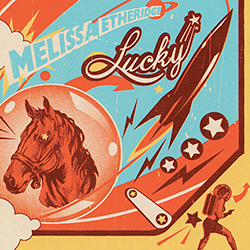 10. Kenny Aronoff “Secret Agent” | Lucky by Melissa Etheridge (2004) | Producers Various
10. Kenny Aronoff “Secret Agent” | Lucky by Melissa Etheridge (2004) | Producers Various
We end with a great example of how a fair amount of room ambience can help a drum set sound like one instrument, rather than a collection of drums and cymbals. Listen closely to the occasional breaks in the arrangement, and you’ll hear the kit ringing out. These peepholes reveal little or no gating on the toms, which adds to the live, ambient quality of the drum sound. Like the rest of the tracks on this record, “Secret Agent” overflows with passion, reinforced by Aronoff’s signature power, which sounds as if he’s annihilating the drums. Listen to the pitch of the snare at the beginning of the track, then again at the end. It sounds lower, doesn’t it? This just doesn’t happen unless the drums get a good spanking.
